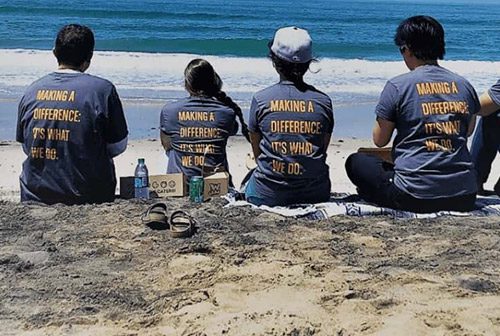Despite December’s onslaught of El Niño rains, the vast majority of our region’s water suppliers missed state-mandated conservation targets–for a second month in a row. In this new year, still firmly gripped by the worst drought in our state’s history, we cannot settle for this indifference and lose the progress we made in meeting conservation targets. Rather than viewing this drought as a temporary emergency – something to be survived until things return to “normal” – we must treat it as a transformative catalyst that pushes us to seek a more sustainable relationship with water.
A paradigm shift is long overdue.
When we conserve, water agencies make less money
The impacts of this drought, born from climate change and environmental variation, have been accelerated by laws and agency models designed for water acquisition and consumption rather than smart use and conservation.
A few years ago, in order to move forward with desalination, the San Diego County Water Authority signed a “take or pay” contract with Poseidon Resources, the developer of the Carlsbad desalination plant. That contract essentially stuck us with paying for the most expensive type of water supply currently in existence, whether the region could use it or not. Water agencies already have few real incentives to conserve, as it lowers their profits, and as we’ve recently seen in San Diego their reaction is to raise rates. With a bunch of expensive desalinated water coming down the pipes and an order from the governor to use less water, San Diego County water agencies in a tricky place, and they are looking for a tricky way out.
Water agencies are lobbying to save face


A more sustainable water future can be achieved by prioritizing and incentivizing conservation; embracing San Diego’s unique natural beauty through locally appropriate landscapes; and, supporting multi-benefit projects that reduce polluted discharges while producing new clean drinking water. Not coincidentally, multi-benefit solutions also minimize the use of and dependence on imported water and often reduce the costs to upgrade, add to, and maintain existing infrastructure.
Which brings us back to the tricky way out. Despite the responsible solutions listed above, San Diego water agencies continue to lobby Sacramento for exemptions from statewide conservation requirements — they want to continue the wasteful, yet lucrative, practices of the past, and save face for committing their ratepayers to unnecessary, expensive desalinated water. They have argued that because they have already invested in various energy-intensive, infrastructure-heavy water supply projects, San Diego shouldn’t have to conserve as much as other regions. As a result of this lobbying, the State Water Resources Control Board announced earlier this week that it would allow the San Diego region to use more water during the drought. This, despite the fact that we can meet our conservation goals and our quality of life here in San Diego is as good as ever.
The water agencies offer no good justification for these credits, and any move to allow our region to use more water will only benefit Southern California water suppliers. It hurts us, the taxpayers, who are saddled with higher prices for expensive water supply projects that we don’t need, while slowing our region’s ability to shift to a new normal based on a water conservation ethic.
Water agencies want to reward water use


Water agencies are ignoring the opportunity
We must consider, fundamentally, how we’ll change our relationship with water going forward. We cannot, from an environmental or an economic standpoint, build costly desalination plants to continue feeding growth while maintaining lush tropical landscapes and ornamental lawns. The drought is a catalyst for change, but that change shouldn’t be a slew of new water acquisition projects, but instead a spark that ignites a new conservation ethic built upon smart and responsible water use, capture, and recycling. Our way of life depends on it, and the Constitution of California requires it.














